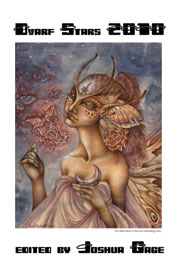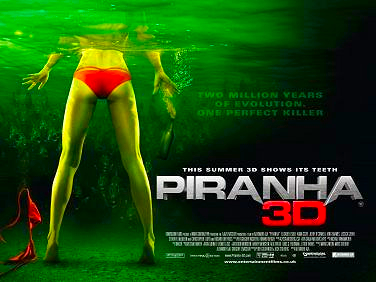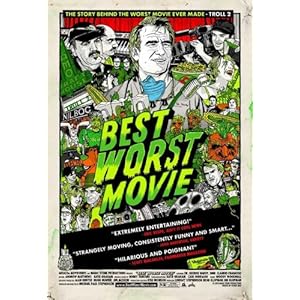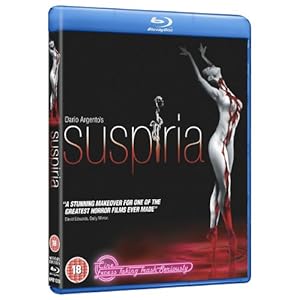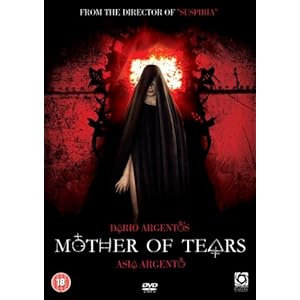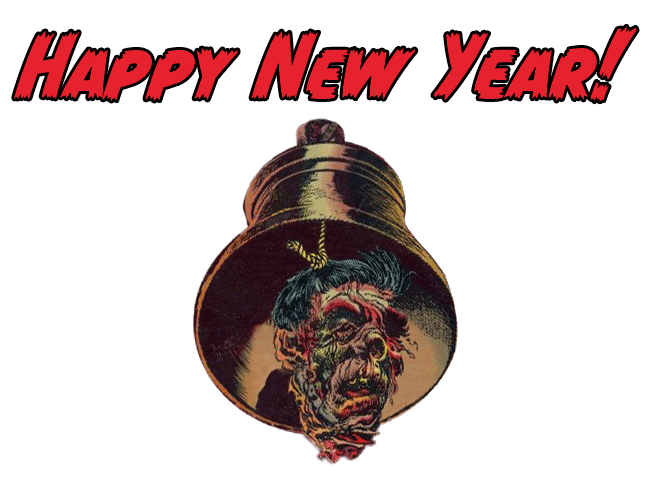
By Nickolas Cook
Editor-In-Chief
The Black Glove Magazine
Welcome to 2011, all you Horrorheads!
May it be a wonderfully frightening year for you and yours...and now on with the next year of free monthly horror culture and entertainment from all your friends here at THE BLACK GLOVE MAGAZINE.
For this new year's first editorial, I had planned to write about the recent upswing in the number of paranormal reality shows that have taken over the cable networks, but oddly two seemingly disparate events took place in the last few days that brought about a stunning realization on my part about something I've been carping about for quite some time now--for the past five years or so, in fact--and that's the dilution, homogenization, the soul killing death of intelligent adult horror entertainment, both on the screen and the printed page.
The first event that got me thinking about my loathing with modern horror, and why I keep poking at it like a rotten tooth, was a private conversation I had recently via FACEBOOK with a professional horror writer who said "horror is dead". I'm not paraphrasing his words in the least. And even though I won't name him here, I will say he's got enough experience in the industry, about 35 years, so that I take what he says seriously. He also happens to be a man whom I respect and admire, and he's one of the reasons I started writing horror to begin with. So you can imagine what an impression his words left on me. He's as sick with the current state of the genre as myself, so we talked for a bit more, lamented the death and remembered the good old days for a time, and then we left the conversation behind.
Only it stayed with me. It depressed me all over again. It got me to digging at that damned rotten tooth ideal of what the genre used to be and what it's become. Why, I asked myself for what surely must be the thousandth time in the past few years, as I've watched the slow and agonizing decline of something I love so much, why do I keep circling round to this subject? Why can't I just accept the fact that this ain't the good old days anymore, and that all things must, and do, eventually pass. I had been lucky enough to have lived through the extraordinarily great years of exploitation cinema, seen the rise of the KING himself, had seen some of the greatest horror films ever made during their first runs, and had been lucky enough to have read some of the greatest short stories and novels ever written in the English language. So why can't I just take what I've had, love all of it for what it's meant to me, and let it go?
Then the second thing happened that helped to bring on my realization about the love/hate relationship I have with the one thing in my life which has formed me, indeed, informed me, and has always been there for me, but now makes me feel old and pissed off.
In case you weren't aware, The Smashing Pumpkins have returned with a new album...well, to be exact, it's something more than simply an album. It's something which will probably revolutionize the way music is produced and distributed. The project is called "Teargarden by Kaleidyscope" and it began late 2009 and will go on for the next year or more, as four and five song mini albums are released to the public. This was dreamed up by the man who is basically Smashing Pumpkins, Billy Corgan. And it's specifically Billy Corgan that got me, yet again, pondering that jagged love/hate thing of mine I have for the horror genre these days.

Like I said, Corgan is Smashing Pumpkins, like Trent Reznor is Nine Inch Nails. Since the Smashing Pumpkins' formation back in 1988, Corgan has been the main lyricist, producer and has played most of the instruments on record that you hear. Since that time when he and the other original members, James Iha (guitar), D'arcy Wretzky (bass guitar, backing vocals) and Jimmy Chamberlin (drums), began the group, Smashing Pumpkins has been Corgan's life. It's been his Heaven and Hell, his safehouse and his haunted mansion, his anchor and his cage. If you don't know who the band is, go here and read about them, it's safe to say they were one of the biggest names in music for over a decade, until their official breakup in 2000. During that time, they'd gone from a club band, to the next big thing, to a huge mainstream top ten band, and then spiraled out of control because of death and drugs. Corgan made the decision to disband the band when he saw the writing on the wall back in the late 1990s, as their music became less and less relevant to a generation of new music fans who wanted boy bands and plastic pop music. He wanted to get out before the Smashing Pumpkins became a musical joke.
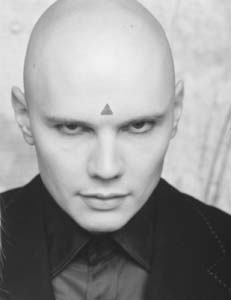
But the problem is Billy Corgan can't quit the Smashing Pumpkins. Not for good. He keeps coming back to the band, sometimes with one or more of the original members, most times alone, with various musicians he pulls into the studio to record and then to play on tour under the Smashing Pumpkins moniker. Smashing Pumpkins is Billy Corgan and vice versa. He can't let it go. It's the band, their past music and the new stuff he produces, that keeps him going. He's even tried to start other bands (ZWANS, anyone?), and has played in other bands as backup member (New Order, for one), but to seemingly little satisfaction, because he keeps coming back to Smashing Pumpkins, the thing he loves and hates most in his life.
But I can understand that. The horror genre is my own Smashing Pumpkins. I keep coming back to it, alternately moon-eyed and hopeful, and then pissed off and regretful.
Look, the bottom line is that I believe what that unnamed horror writer told me. I believe that "horror is dead". It is. At least it is here in America. Look at what's happened to so-called horror cinema in this country in the last five...hell, ten...years. The movies just keep getting worse and worse. They're overly reliant on CGI; they have sub par frat boy intelligence level narratives (and we all thought the 80s horror films were stupid?!); and almost all of them aim right for that coveted PG-13 market, which in and of itself is fairly oxymoronic when you get down to it--how the hell can any movie rated PG-13 for scare content be scary?

And the books aren't any better. Be they from the big house publishers or the small press, there's a disturbing lack of production value, editorial guidance, or even story. There are exceptions, of course, but these seem to me to be less and less populace each year. It's a fact that there are less and less people reading books these days, and that means even less people are reading what has long been considered by the publishing industry and educational intelligentsia as "ghetto-fiction". And the plain truth is that there are more and more bad self-published garbage being thrust upon the book buying public each year. It's gotten out of hand these days, what with the ease of access to publishing tools online and otherwise, which allows any person with the money and time to publish every little thing that pops into their little mind, and then call themselves a 'Horror Author'. It's so bad now that it's almost an embarrassment to call myself a horror writer because these assholes and idiots have given such a bad representation to the naive reading public of what horror fiction is all about. Seriously. Take a look at FACEBOOK, see how many Friends have the words Horror Author either before or after their names online. And it's a safe bet that if they do have said two word description hyphenating their name somewhere that they're probably pretty bad, and don't deserve to call themselves any kind of author, writer, editor, pig slopper, whatever. A damn safe bet, folks. And that ease of access I mentioned above is becoming easier and easier. I'm not saying that's all bad, but it's also going to drag the genre down even further into the abyss, along with anyone who is doing this thing for real, for keeps. Like me.
Yes sir, "horror is dead".
So why do I keep coming back to it in the hopes that it's NOT dead? Why can't I truly believe it in my heart and soul and move on?
Most people think I'm a pessimist, that I always see the glass as half empty and probably poisoned to boot. But when it comes to my beloved horror genre I am an unwilling optimist. A part of me deep down will not allow it to be dead. I truly want to believe it's going to heave itself out of its current PG-13, small press dreck, self-published, e-garbage coma and shamble back to life. That like Frankenstein's monster it will somehow get that much needed jolt of originality and mass public interest again. That like The Smashing Pumpkins, its creators, its lovers, its innovators will pull it out of the scrap heap and push it into the spotlight once more and give all of us lovesick Horrorheads the darkness, the nightmares and cathartic mirror we need to survive future days.
Yes, perhaps "horror is dead". But we true Horrorheads are not.
We need to remember that. We need to remind people why this is the most important fictional playground of the mind and spirit that the human animal has at its disposal. Perhaps through this re-evaluation, we can provide that jolt for the new writers and filmmakers out there who want to do this horror thing, not because they've been fooled into thinking that it's easy to do, that it's for the brainless gorehounds with no taste. But because horror is the way and the light for getting our sorry ass species to a better place. I earnestly believe that the best way for us to do that is by giving historical context to the genre and its offerings. By doing so, I know in my dark, dark heart that we can help rejuvenate and even mutate this thing we love with such insane dark passion. Now I'm talking to the true Horrorheads here, of course, not so much to the casual Horr-peas (see my now infamous editorial for April 2010 e-issue #10 for the definition of a Horr-pea) who still think movies like "Twilight", "Van Helsing" and the "Resident Evil" CGI-o-ramas are actually horror movies.
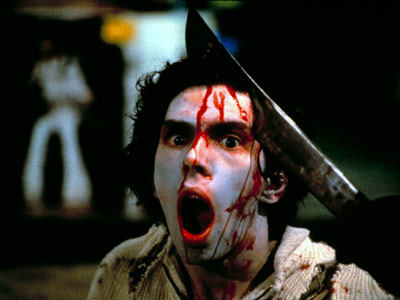
Horror may, indeed, be dead, but NOT if this Horrorhead has anything to say about. Because New Year's is traditionally a time for resolutions, I've resolved to start doing exactly that: putting the horror genre into context, to make more of an effort to put the horror genre into a historical context. So future issues of THE BLACK GLOVE MAGAZINE will have even more classic horror film and books reviews. Because as Horrorheads with a voice, we need to remind people about the classics, why the horror genre is the most impactful of all genres. Look for more of those classics in reviews and articles/columns right here at THE BLACK GLOVE MAGAZINE.
--Nickolas Cook
Editor-In-Chief
The Black Glove Magazine













